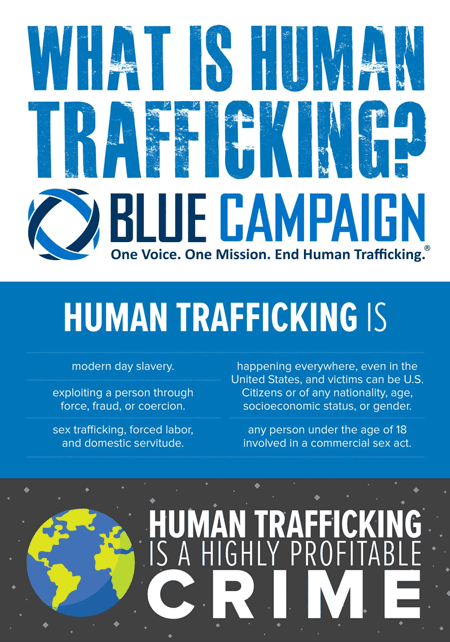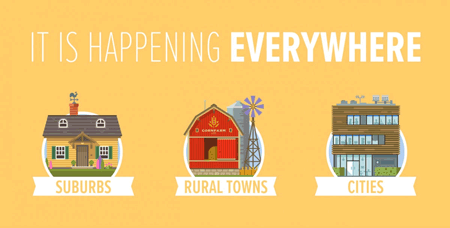Human trafficking is a global issue that affects every country around the world and all ages, races, genders, and cultures. Human trafficking is not a new issue. It has been occurring and will continue to occur unless it is spotlighted by increased education and identification of the victims. Human trafficking is often referred to as “modern human slavery” (Gorman & Hatkevich, 2016).
Human trafficking is about profit. After drug dealing, human trafficking is tied with illegal arms trade as the second largest criminal enterprise in the world (Resendez, 2012) . Because human trafficking has been largely a hidden crime, the public has never been aroused to fight it; a lack of identification with the victims has impeded moves to intervention and to make governmental resources available to them. Healthcare providers, with the proper tools and training, can act as a critical resource in identifying and implementing escape from the victims’ abusers.

Source: DHS, 2017.
The 2016 Global Slavery Index estimates that, including U.S. citizens and immigrants, 57,700 people are victims of human trafficking (Wikipedia, 2017). The actual prevalence of human trafficking is unknown because most victims are too fearful to come forward (Eccleston, 2013).
Human trafficking is a concern of all hospitals in the country. Many states are now requiring nursing staff to have training in identifying possible victims of trafficking. Most important, we must have the proper training to identify when it is safe tocommunicate with the possible victim while keeping both the staff and the victim safe from retaliation. In addition, resources must be identified to the victim in advance then provided once desired.
Top priority is to protect the victim from potentially increased harm. Human traffickers are known to be very manipulative and they don’t hesitate to use violence on their victims. As healthcare providers, our goal is keep the victim safe and if possible, assist victims in escaping their abusers. This must be done with finesse and skill. There are several large hospital organizations across the country that are now dedicating clinics to victims of human trafficking (Stempniak, 2017).
Nearly 21 million people worldwide are trapped in a trafficking situation each year according to the International Labor Organization. During 2016, the National Human Trafficking Hotline (NHTH) received 1,623 calls and 550 case reports related to human trafficking in Florida. This is the third highest call volume in the country (NHTH, 2017). Of the 550 cases reported, 73% were related to sex trafficking while 17% were for labor trafficking. In addition:
- Nearly 85% of reports involved trafficking in women.
- Nearly 70% of reports involved adults.
- About 30% of reports involved minors.
- Venues for sex trafficking included hotel/motel based, brothels, escort services, online ads, and street-based.
- Venues for labor trafficking included domestic work, agriculture, traveling sales crews, restaurant/food service, and hospitality. (NHTH, 2017)
Victims can be any age, race, or culture, and found in any country. The abusers prey on the weak and vulnerable. Youth especially at risk for being trafficked as are those from a lower socioeconomic status or privilege. These young people are at greater risk because they are looking for an escape from poverty or an abusive situation. The trafficker is precise and methodical in cultivating a friendship and what appears as a loving environment with the future victim.
Human trafficking has been reported in all 50 states with both U.S. citizens and foreign victims (Stempniak, 2017). Types of human trafficking can vary from community to community.

Source: DHS, 2017.
